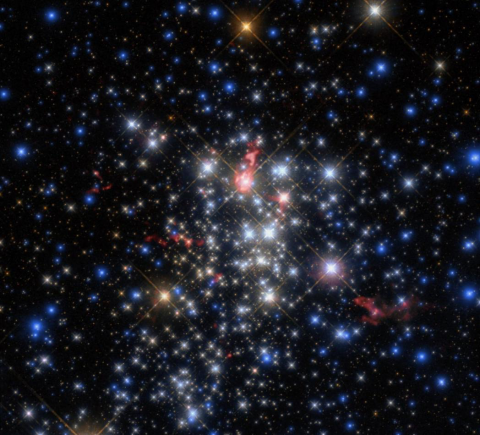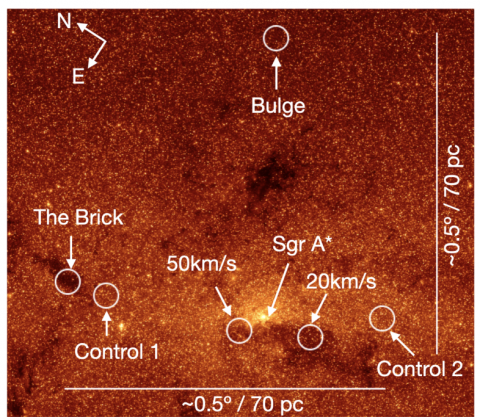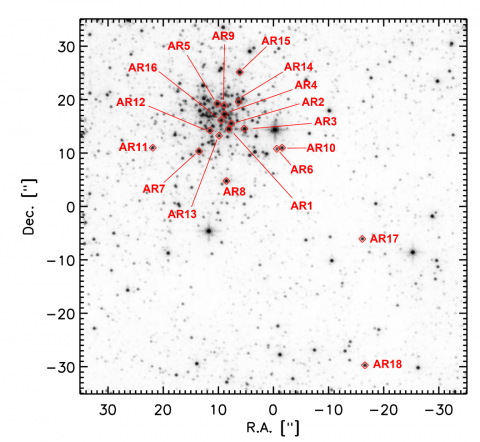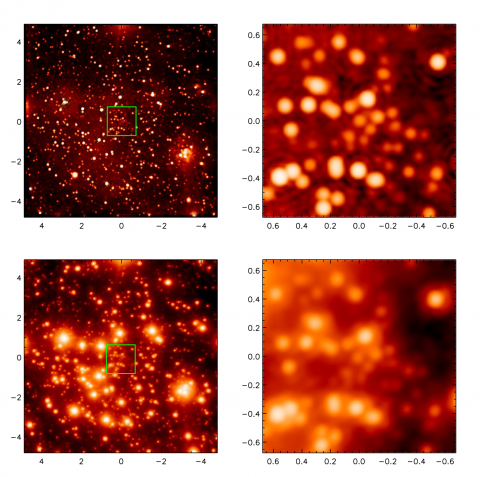Westerlund 1 cluster: a nursery of giant stars emerging from the darkness
The Institute of Astrophysics of Andalusia (IAA-CSIC) participates in the study of the most massive young cluster of stars in the Milky Way. This stellar swarm brings together different types of giant stars in different evolutionary phases, and constitutes a first-class laboratory for the study of the formation and evolution of massive stars.
Distance to three molecular clouds in the central molecular zone
In this work, we computed the distances to three molecular clouds in the central molecular zone (CMZ), the 50 kms-1 , 20 kms-1, and the Brick clouds, and investigated their CMZ membership. We used the colour magnitude diagrams Ks versus H−Ks to compare stars detected towards the target clouds with stars detected towards three reference regions in the nuclear stellar disc (NSD) and the Galactic bulge. We used red clump (RC) stars to estimate the distance to each region.
Radio observations of massive stars in the Galactic centre: The Arches Cluster
We present high-angular-resolution radio observations of the Arches cluster in the Galactic centre, one of the most massive young clusters in the Milky Way. The data were acquired in two epochs and at 6 and 10 GHz with the Karl G. Jansky Very Large Array.
The Milky Way’s nuclear star cluster: Old, metal-rich, and cuspy
In this recent work we studied deep high angular resolution images of the central parsec of the Milky Way’s nuclear star cluster. We find that it is predominantly very old, with about 80% of its stars having formed over 10 Gy ago, and metal rich, with its stars having about twice solar metallicity. These findings imply that typical globular clusters, such as they are found in the halo of the Milky Way, cannot have contributed significantly to the mass of the Milky Way’s nuclear star cluster.




